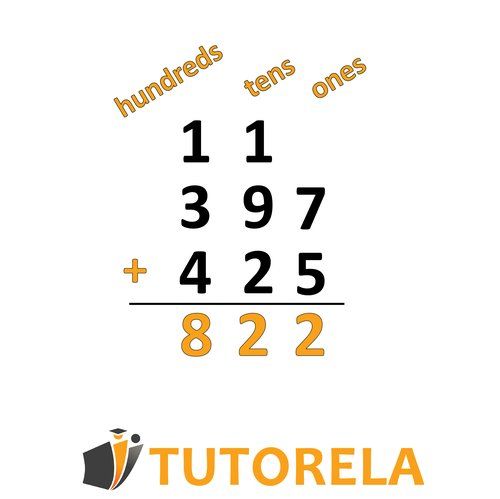How do we solve vertical addition?
1) Write the numbers vertically one under the other in an organized way.
2) Mark + on the left side and draw a line to separate between the exercise and the results line.
3) Add the ones digits together, then move to the tens digits, then the hundreds digits, and so on.
If we obtain a two-digit number - write the ones digit in the result and carry the above the next digit.
